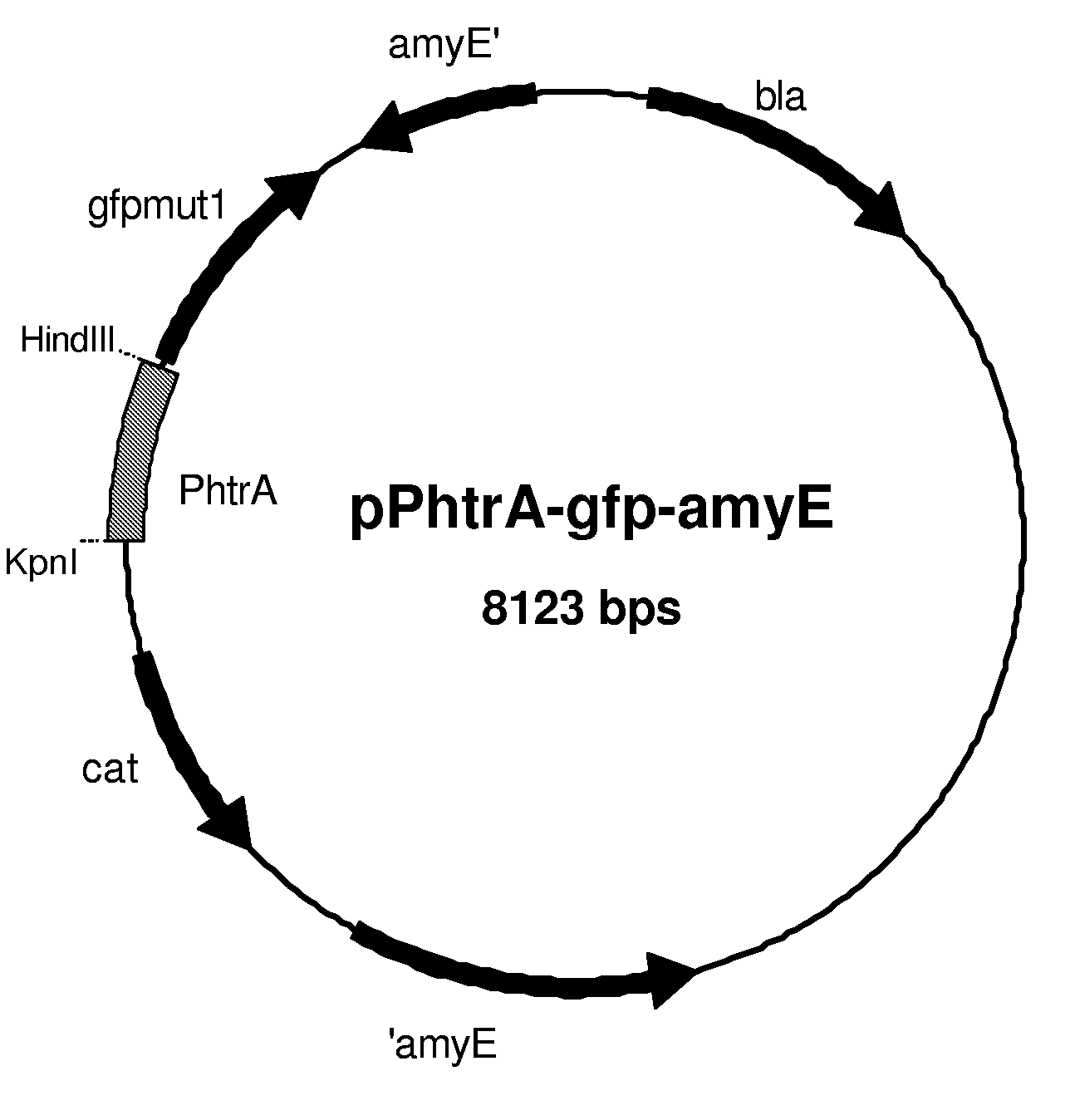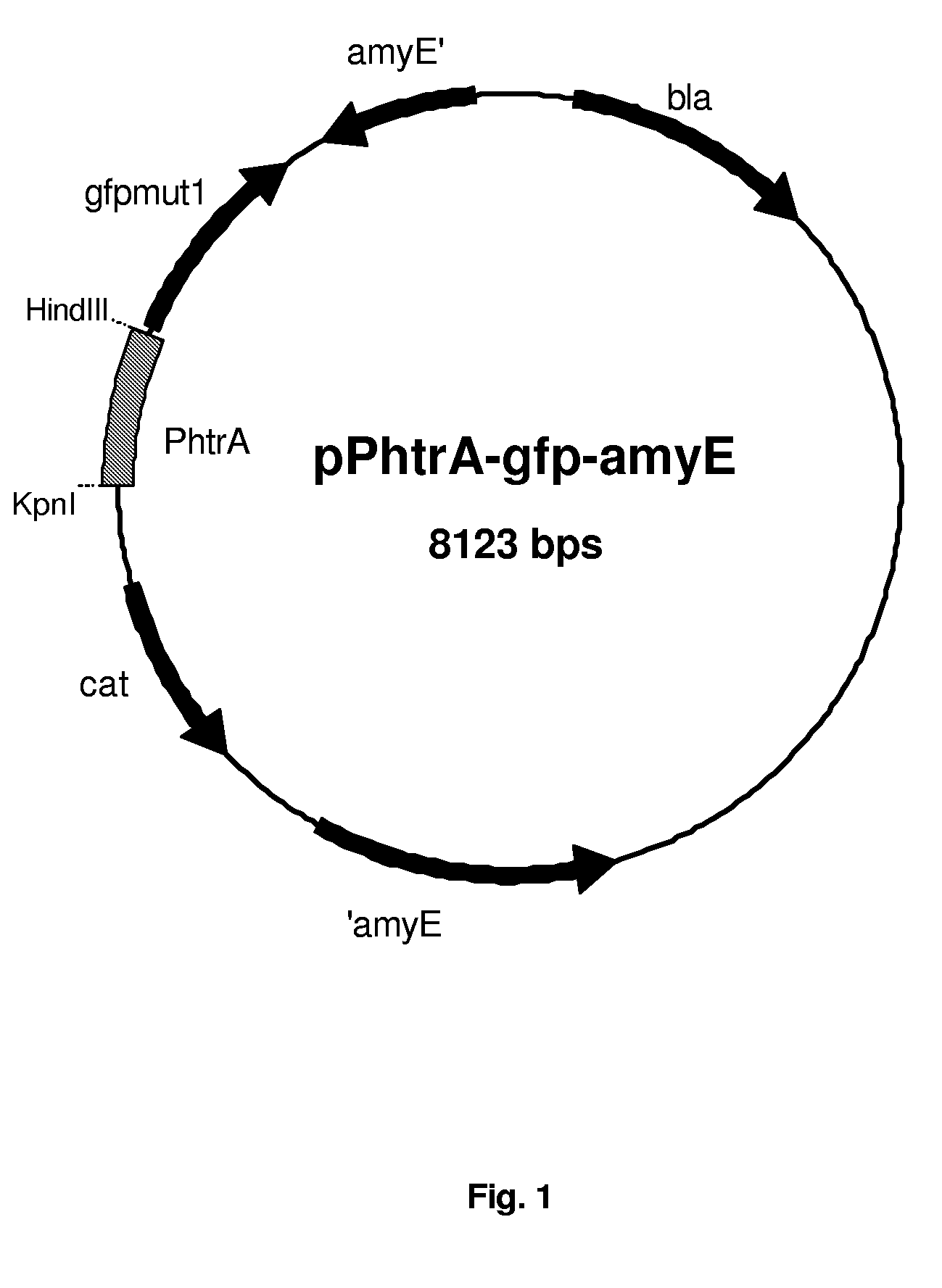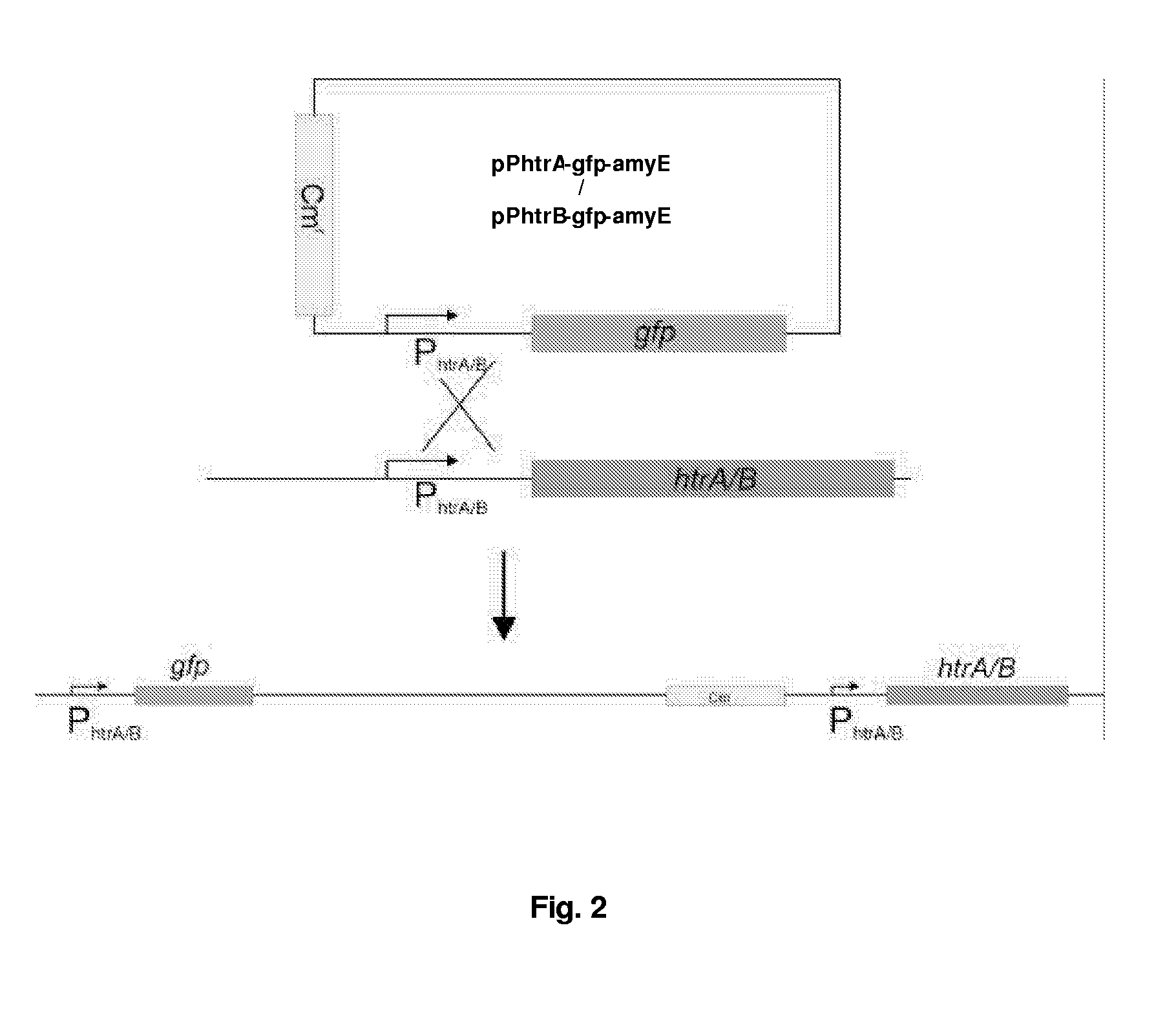Method of Expression Cloning in a Host Cell
a technology of host cells and expression, applied in the field of expression cloning in a host cell, can solve the problems of low throughput of the method and the lack of automated detection technology
- Summary
- Abstract
- Description
- Claims
- Application Information
AI Technical Summary
Problems solved by technology
Method used
Image
Examples
example 1
Construction of Bacillus Reporter Plasmids and Reporter Strains
[0204]1.1 Construction of Reporter Plasmids pPhtrA-gfp-amyE and pPhtrB-gfp-amyE
[0205]First, reporter plasmid pPhtrA-gfp-amyE was constructed as follows. The gene encoding the optimized version of GFP, gfpmut-1 (P. Cormack, R. H. Valdivia, and S. Falkow, 1996; FACS-optimized mutants of the green fluorescent protein (GFP), Gene 173, 33.), was amplified by PCR, using pSG1151 (P. J. Lewis and A. L. Marston, 1999; GFP vectors for controlled expression and dual labelling of protein fusions in Bacillus subtilis, Gene 227, 101.) as template DNA, with the following primers: RN-lacZ-rv (SEQ ID NO: 3), GTGAGCGGATGCAATTTCACACAGG; and gfp-terminator-rv, (SEQ ID NO: 4) GTGGCTCAGCTTTTTTAAGGAAGGGAGGCTCTCACCTCCCTTCCCTTTATTTGTAGAGC TCATCCATGCC, resulting in KpnI and Bpu1101I (in bold) sites up- and downstream gfpmut-1, respectively. The 913 bp PCR product was ligated in pDL (containing homologous flanking regions of the amyE locus for sit...
example 2
Analysis of Secretion Stressed Cells by Fluorescent Activated Cell Assays
2.1 Selection of Secretion Stressed Cells by Fluorescence Activated Cell Sorting:
[0211]The plasmids pUB110 (empty control vector) and pKTH10 (encoding Bacillus amyloliquefaciens a-amylase gene amyQ) were used in a ratio of 1:20 for co-transformation of Bacillus subtilis strain VT210A. One part of the cells was spread on selective TY agar plates, and to the other part 2×TY broth containing kanamycin, was added and the cells were cultivated over night. The separate plasmids were transformed as well, performing the same operations as for the co-transformation. The next day, cultures were analyzed for GFP fluorescence on a flow cytometer type FACS (Mo-Flo of Dako-cytomation) by a skilled operator. A blue laser of 80 mWatt, and 488 nm was used. A typical FACS experiment comprised analysis of 20.000 events (cells). First, fluorescence signals of cells of VT210A, pUB110 (no secretion stress) and of VT210A, pKTH10 (sec...
example 3
Genome-Wide Expression Analyses of A. niger to Identify Secretion-Induced Promoters
[0214]Genome-wide expression analyses were performed to identify promoter sequences that are highly expressed in A. niger WT-PHY, and show no or low expression in A. niger WT-GFP, A. niger WT-vector and A. niger WT-1. To simulate future application experiments protoplasts were obtained of A. niger WT-1, A. niger WT-GFP, A. niger WT-PHY and A. niger WT-vector strains. An amount of 20 ml liquid selective regeneration medium supplemented with 50 mg / l phleomycin (Invitrogen) in case of A. niger WT-GFP, A. niger WT-PHY and A. niger WT-vector, was inoculated in a petri dish with 100 microliter 10E7 / ml protoplasts. After a growth period of 3 days at 30 degrees Celsius (static), a mycelial pellet had formed at the surface of the liquid medium which was used for total RNA isolation. cDNA synthesis, labelling of the cDNA and hybridisation on Affymetrix A. niger GeneChips™ was performed according to suppliers pr...
PUM
| Property | Measurement | Unit |
|---|---|---|
| Fraction | aaaaa | aaaaa |
| Fraction | aaaaa | aaaaa |
| Fraction | aaaaa | aaaaa |
Abstract
Description
Claims
Application Information
 Login to View More
Login to View More - R&D
- Intellectual Property
- Life Sciences
- Materials
- Tech Scout
- Unparalleled Data Quality
- Higher Quality Content
- 60% Fewer Hallucinations
Browse by: Latest US Patents, China's latest patents, Technical Efficacy Thesaurus, Application Domain, Technology Topic, Popular Technical Reports.
© 2025 PatSnap. All rights reserved.Legal|Privacy policy|Modern Slavery Act Transparency Statement|Sitemap|About US| Contact US: help@patsnap.com



